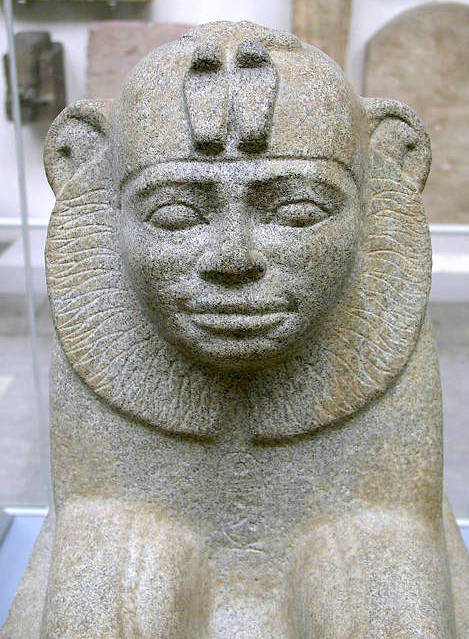A mini controversy has just broken out in social media about a rather ugly new rendering of the famous Nefertiti bust. The original bust, currently on display at the Neues Museum in Berlin, is one of the most iconic pieces of Egyptian art, recognized as easily as King Tut’s gold mask. It was not a surprise, therefore, that Egyptian authorities recently decided to erect a larger-than-life replica of the same bust at the entrance to the city of Samalut, to honor her memory.
This effort ended in – pardon the pun – a bust in its own right. The image, which only bears a very superficial resemblance to the original, has caused a storm in Egyptian social media, attracting worldwide attention. While the original bust is very well known, the story of its discovery is perhaps less well known. Nefertiti’s bust was discovered in the ruined workshop of the sculptor Thutmose on December 6, 1912 by a German archaeological team.

Presentation of the Nefertiti bust shortly after discovery in 1912. (Left to right: Hermann Ranke, Paul Hollander and Mohammed es-Senussi)
Although the bust is uninscribed, Ludwig Borchardt, the dig director, immediately realized who was represented: the tall blue crown with uraeus serpent must belong to the queen. “No use describing it, you have to see it” he wrote.

Handwritten note by Ludwig Borchardt on the discovery of the bust. Aside from a quick sketch, it contains the remark “No use describing it, you have to see it.”
The Egyptian government gave the bust, and other finds, to the German expedition at the end of the season, according to a custom of the time, known as “partage.” It was not until ten years later, after World War I, that the bust was put on display in the Egyptian Museum in Berlin. The reaction was immediate: Nefertiti became an icon and the Egyptian government demanded her return, claiming that she had been allowed to leave the country by subterfuge. The matter remains unresolved to this day, and Nefertiti has survived two world wars in Berlin.
Nefertiti was the principal wife of the New Kingdom pharaoh Akhenaten (ca. 1350 – 1335 BC). Akhenaten tried to revolutionize Egypt, outlawing the worship of a host of gods, headed by Amun, the king of the gods. In their place he proposed the worship of the Aten, the sun-disc that gave life to the world. He moved the capital of Egypt from Thebes to a virgin site 250 miles to the north. This new capital he called Akhetaten (“horizon of the sun disc”), the modern site of Tell el-Amarna. Akhenaten’s changes did not find favor, and after his death the site was abandoned by his successor – the more familiar Tutankhamun – as the capital moved back to Thebes. Amun had restored the status quo.
A new religion required a new artistic style to express itself. Set against earlier Egyptian objects, Amarna art can appear more naturalistic, softer and more intimate. Images of Akhenaten, his wife Nefertiti, and their six daughters were the icons of this new creed, and Amarna was filled with sculptor’s workshops producing decoration for the city. The bust of Nefertiti, with its unusual shape, was probably a model used to define and standardize images of the queen.
The latest update on the “controversy” tells us that the Samalut bust is to be replaced with a statue of a peace dove. So all is well that ends well.
The original bust continues to attract huge throngs of tourists in Berlin. A museum quality replica of the same bust, manufactured by highly talented artists at the Neues Museum, has been on display in the Hall of Ancient Egypt at the Houston Museum of Natural Science since 2013. She looks forward to seeing you there.

Her Majesty awaits your visit at the Houston Museum of Natural Science.







